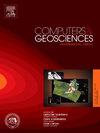基于few-shot学习的低数据场景下岩石薄片图像分类
IF 4.4
2区 地球科学
Q1 COMPUTER SCIENCE, INTERDISCIPLINARY APPLICATIONS
引用次数: 0
摘要
岩石微观薄片图像识别是岩石矿物分析的关键。通常,深度学习模型用于自动化专家知识,但某些类别样本的稀缺性限制了可用的训练数据,影响了传统深度学习模型的性能。针对有限样本条件下岩石薄片图像的分类问题,提出了一种新的少镜头学习模型。基于预训练和元训练的先进少镜头学习过程,我们首先引入了交叉注意特征融合(Cross Attention Feature Fusion, CAFF)模块。该模块通过结合显微镜下岩石薄片的平面偏振光图像(PPL)和交叉偏振光图像(XPL)生成新的特征,并通过自主学习与原有特征相结合,获得更全面的特征。其次,我们提出了一个基于原型网络(ProtoNet)的特征选择模块。该模块从类内代表性和类间独特性两个角度提取关键特征维度,增强了模型的分类能力。最后,利用ImageNet-1000k上预训练的ResNet50和Swim-Transformer作为骨干网,在南京大学岩石薄片教学数据集上进行了模拟实验。在5-Way 5-Shot few-shot学习任务标准下,提出的protonet - caf - fs模型的平均分类准确率分别达到96.70%和99.16%,优于传统的建模方法,显示了新增模块的有效性。本文章由计算机程序翻译,如有差异,请以英文原文为准。
Rock thin section image classification in low data scenarios using few-shot learning
Microscopic rock thin section image recognition is crucial in rock mineral analysis. Typically, deep learning models are used to automate expert knowledge, but the scarcity of samples in certain categories limits the available training data, affecting the performance of traditional deep learning models. This paper proposes a novel few-shot learning model to address the challenge of classifying rock thin section images under limited sample conditions. Based on advanced few-shot learning processes involving pre-training and meta-training, we first introduce a Cross Attention Feature Fusion (CAFF) module. This module generates new features by combining plane polarized light images (PPL) and cross-polarized light images (XPL) of rock thin sections under a microscope, integrating these with the original features through autonomous learning to obtain more comprehensive features. Secondly, we propose a Feature Selection (FS) module based on the prototypical network (ProtoNet). This module enhances the model’s classification capability by extracting key feature dimensions from two perspectives: intra-class representativeness and inter-class distinctiveness. Finally, using the pre-trained ResNet50 and Swim-Transformer on ImageNet-1000k as the backbone network, simulation experiments were conducted on the Nanjing University Rock Thin Section Teaching Dataset. Under the 5-Way 5-Shot few-shot learning task standard, the proposed ProtoNet-CAFF-FS model achieved an average classification accuracy of 96.70% and 99.16%, outperforming traditional modeling methods and demonstrating the effectiveness of the newly added modules.
求助全文
通过发布文献求助,成功后即可免费获取论文全文。
去求助
来源期刊

Computers & Geosciences
地学-地球科学综合
CiteScore
9.30
自引率
6.80%
发文量
164
审稿时长
3.4 months
期刊介绍:
Computers & Geosciences publishes high impact, original research at the interface between Computer Sciences and Geosciences. Publications should apply modern computer science paradigms, whether computational or informatics-based, to address problems in the geosciences.
 求助内容:
求助内容: 应助结果提醒方式:
应助结果提醒方式:


